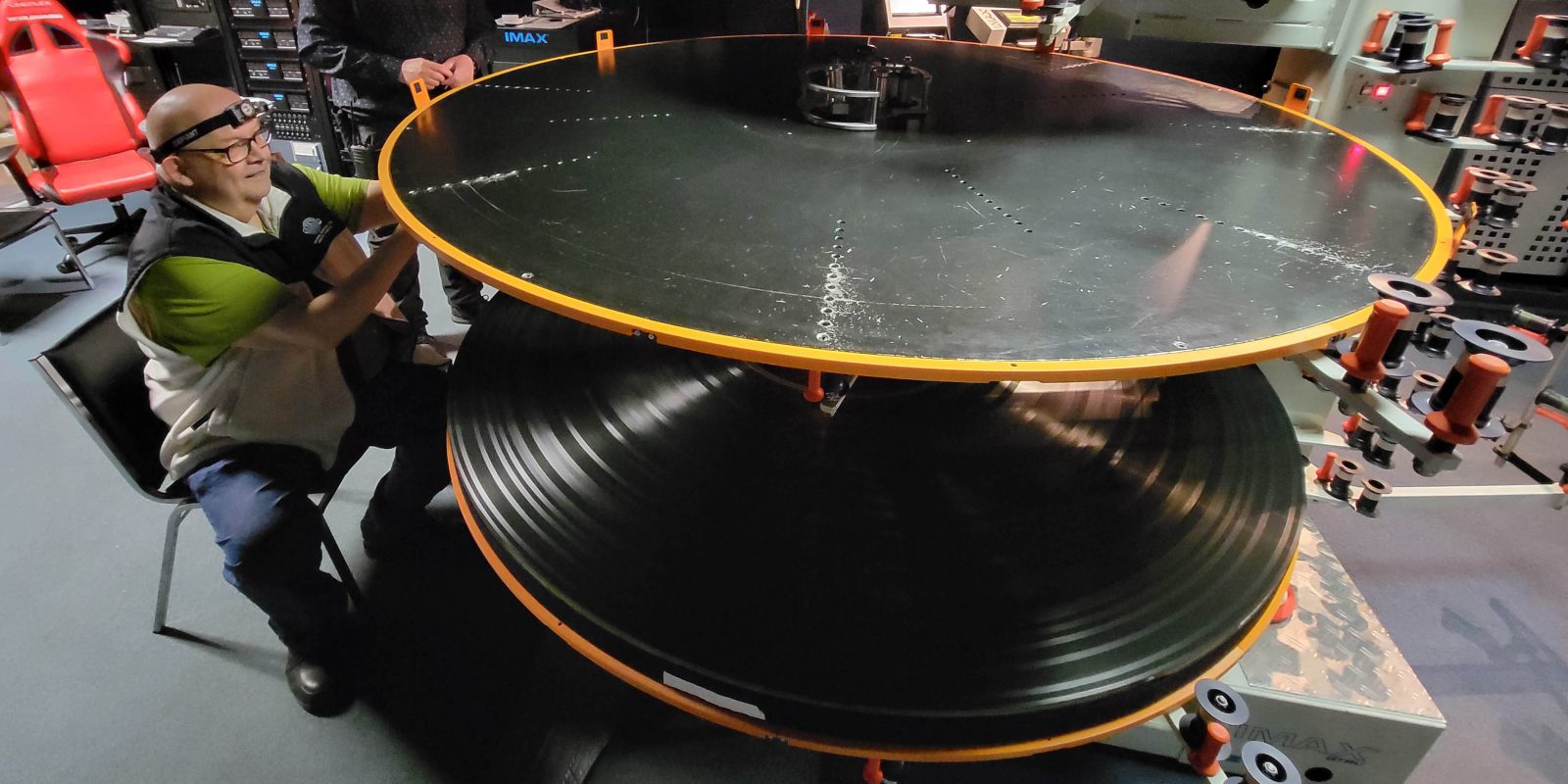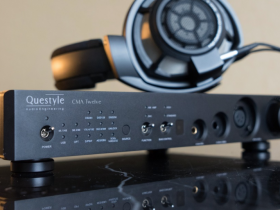Steve Makris was behind the scenes at the IMAX 70mm Print projection room at the Scotiabank Cineplex Theatre showing of Oppenheimer in West Edmonton Mall. The three hour-long film winds across the room between projector and large platters through dozens of free-spinning guides at nearly six feet per second bringing a rare visual experience to movie goers. The theatre had to blow the dust off the $130,000 analog projector after 6 years of inactivity.
What is 11 miles long, 70mm wide and weighs 600 pounds?
That’s the Oppenheimer Biopic three-hour MIAX 70mm Print film movie on the creation of the first atomic bomb in the U.S. written and directed by Christopher Nolan. Currently playing in 30 IMAX 70mm theatres worldwide including Canadian cities. It’s also playing worldwide in digital projection screens albeit at lower quality similar to most all other movies.
If you have a chance to see Oppenheimer in full IMAX 70mm film…do! It only happens once every several years where the best of the movie industry come together in an immersive story with great actors and visuals unmatched in any other movie medium.
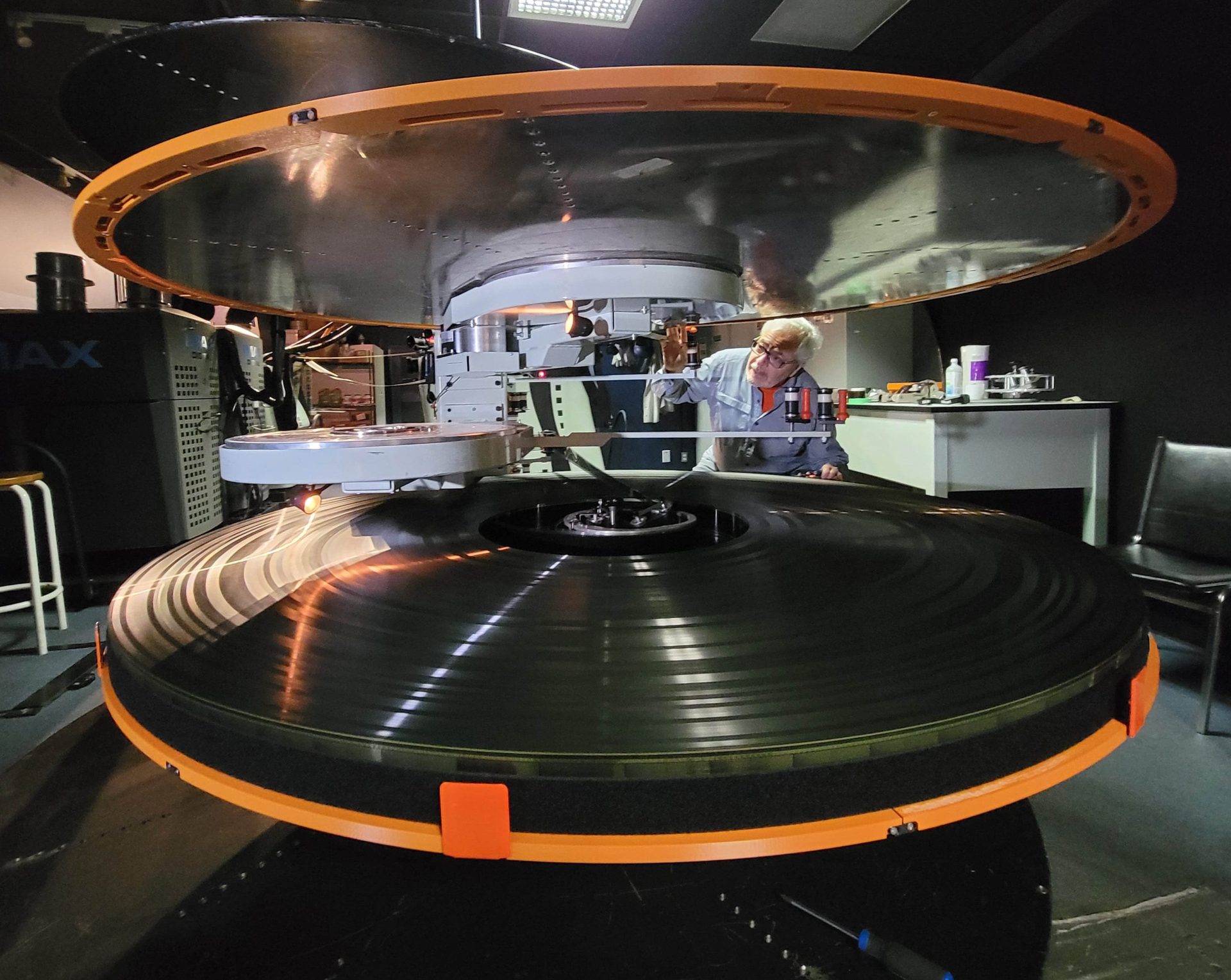
In case you haven’t heard, movie theatres don’t play movies from film reels anymore, instead projecting digital versions downloaded online simplifying the handling and storage of movies. Digital movie’s pervasiveness also requires less skilled projection room staff thinning out the projectionist population. IMAX dispatched skilled projectionists in most theatres to handle the Oppenheimer IMAX 70mm Print showing including folks like Alberta-born Earl Warn. Now retired but often summoned to operate and trouble-shoot IMAX 70mm film projectors, Earl’s first job was to splice the IMAX 70mm film that was sent in 53 shorter reels. They had to be joined in the right sequence in the projection room. “After eight hours of carefully joining all these reels, we had to watch the entire movie ourselves to make sure we got it right,” said Earl.
The Complexities of Analog Film Projections
“The film platters had to be enlarged to accommodate the 11-mile long film”, said Earl. It winds itself across the projection room through an intricate maze of guides, including an ingeniously simple sticky tape dust remover, on the way to the projector. On the way out it is rewound to another similarly sized platter for the next show.
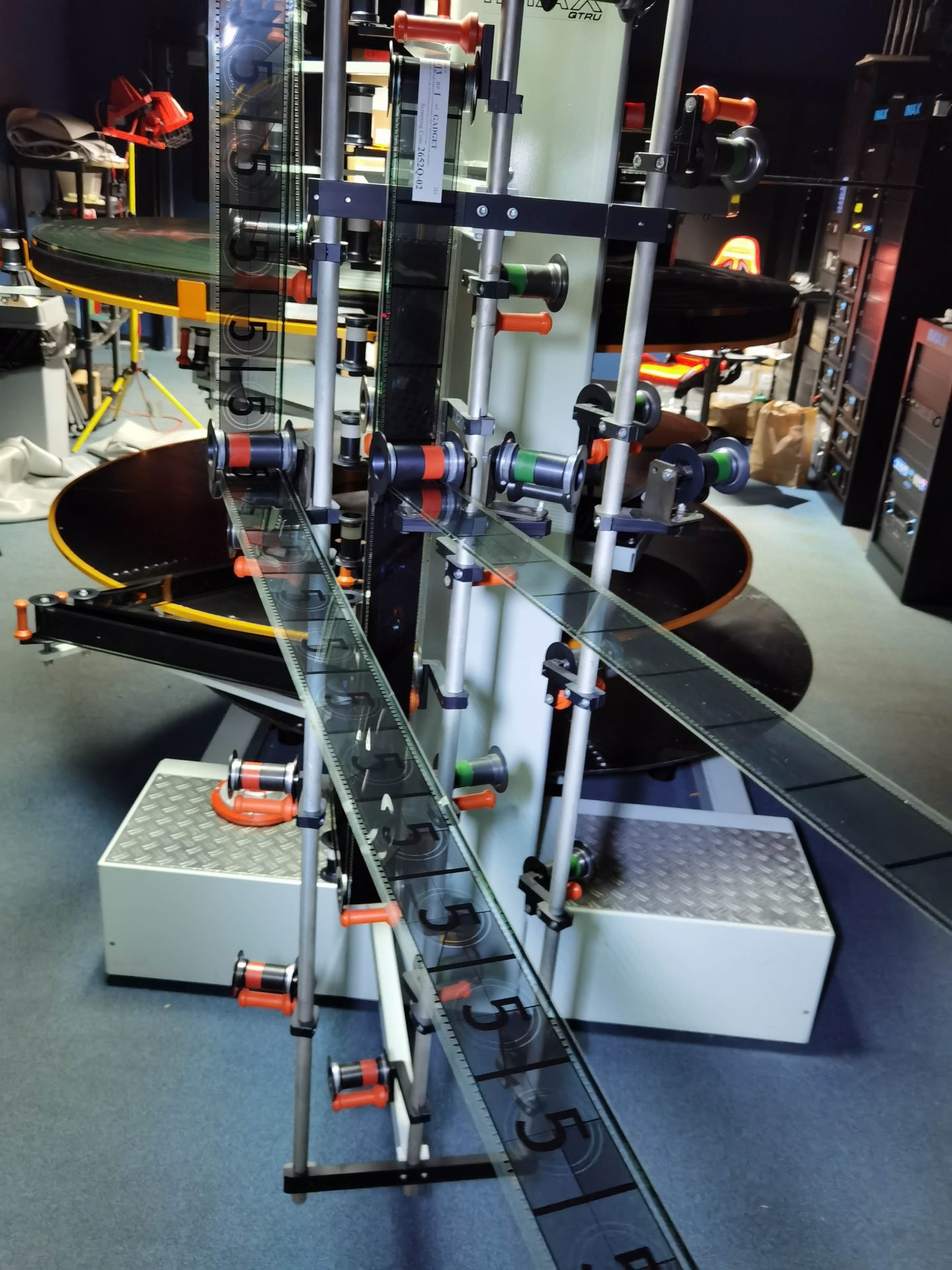
As each film frame passes the projector light (at 24 frames per second) a special curved glass plate instantaneously presses it on and off evenly flat so every part of the screen is sharp. Nice!
Earl literally blew the dust off the IMAX 70 mm film projector which hadn’t seen action in six years at Scotiabank Theatre. Two lower quality 2K IMAX digital and 4K IMAX with Laser projectors are regularly used in the theatre.70 mm IMAX film does not carry sound. The high-quality digital audio is stored separately in containers which Earl has to one-time synchronize with the movie, accurately timing the sound with actors moving lips or other sounds.
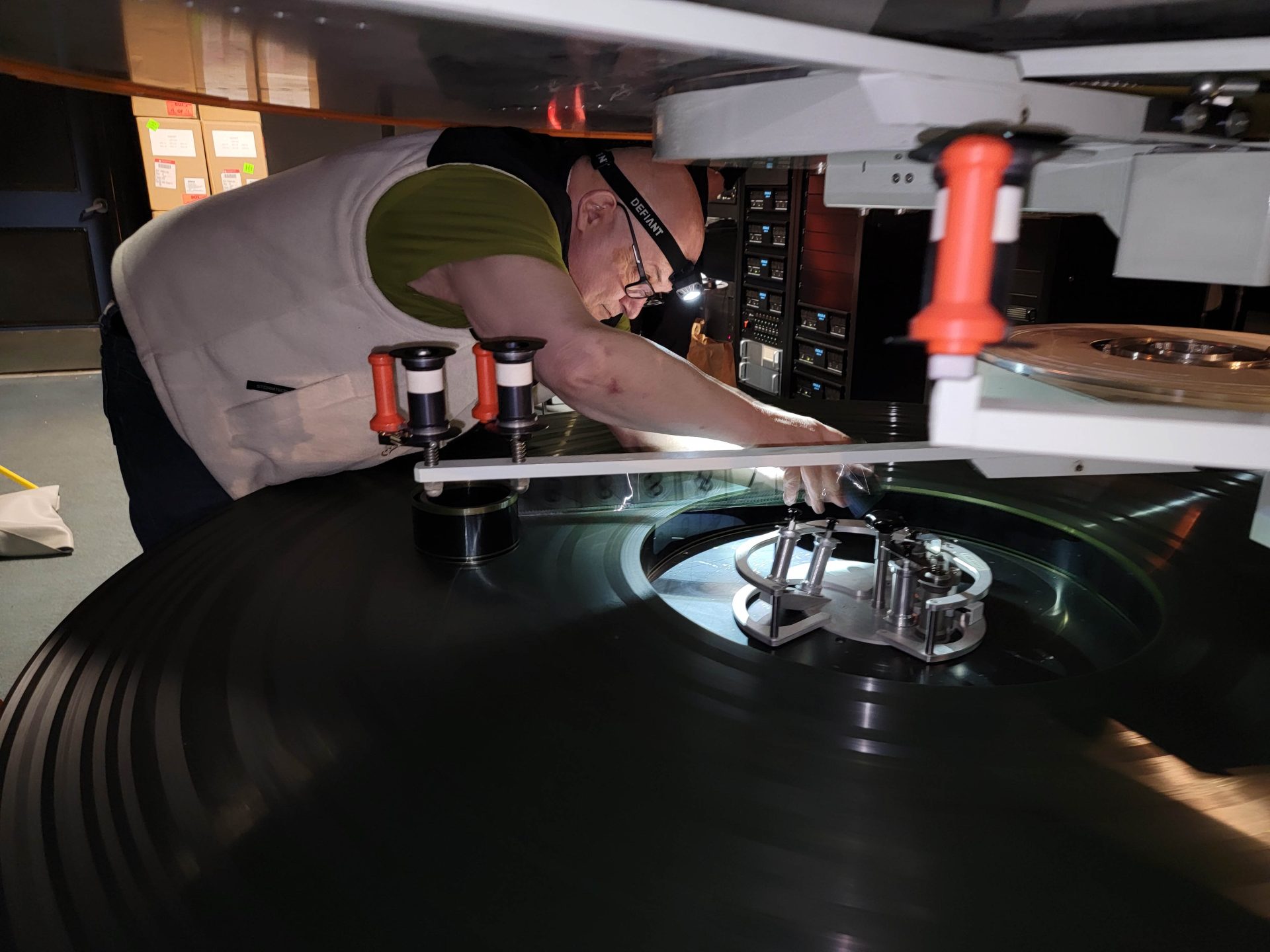
A digital copy of the film similar to the quality of most 4K movies is on standby to play in case of projection issues. One would think anything can go wrong with 11 miles of mylar film winding across a room through a $135,000 projector, indeed it did!
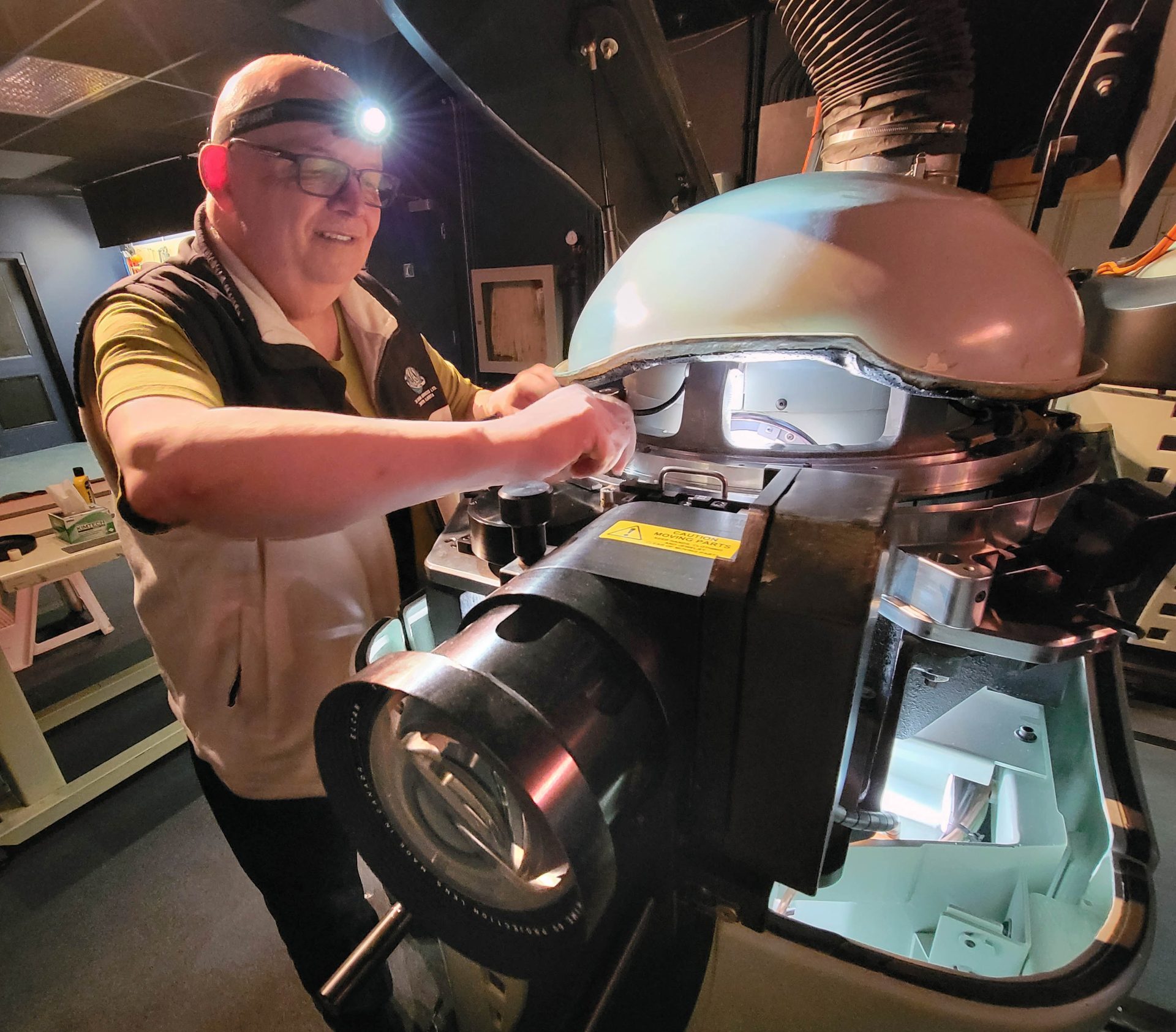
During its run here at Scotiabank Cineplex, Earl’s jack-of-all-trade skills saved the day after an interruption, ten minutes in. “The air compressor’s vibration had destroyed the power switch, so I scrambled about finding a straw wrapper to jam in the switch keeping it on”, he said. The interruption lasted only several minutes.
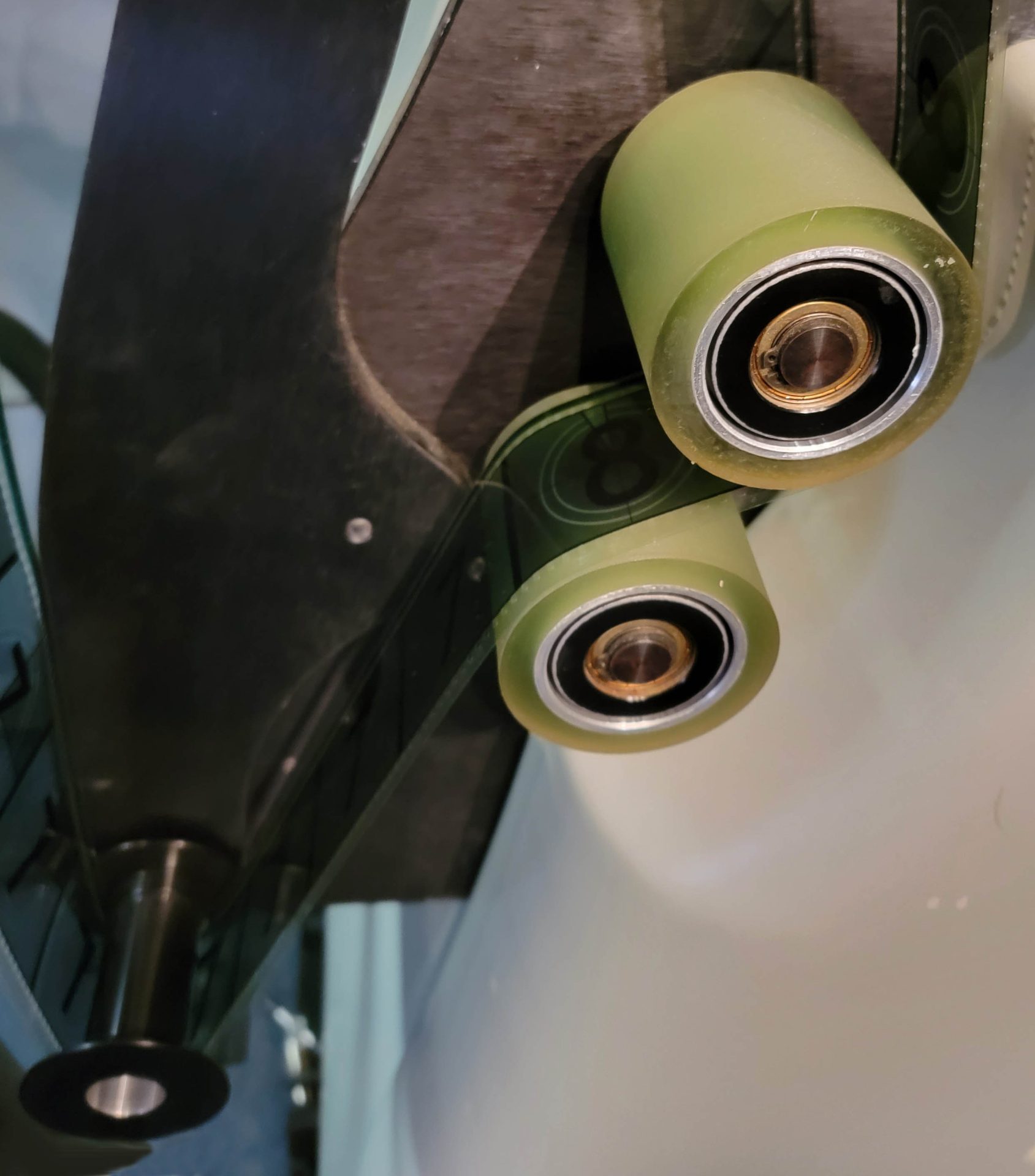
What is Special About IMAX 70mm Print Film
No other movie camera, including the newest digitals, can match the quality of IMAX 70mm filming. Here are some key advantages:
- Higher resolution: IMAX 70mm film frames are 4.5 times larger than 4K video. mm in size, which is equivalent to about 18,000 x 12,000 pixels producing a whooping 18K image. Higher resolution means more detail and sharpness in the image, especially when projected on a large screen.
- Wider aspect ratio: IMAX 70mm film frames have an aspect ratio which is closer to the human field of view than the standard widescreen aspect ratio used by most digital cameras. Wider aspect ratio means more immersive and cinematic experience for the viewers, as they can see more of the scene.
- Better color and contrast: IMAX 70mm film has a high dynamic range, which means it can capture a wide range of brightness and color values without losing detail in the shadows or highlights, something digital cameras always struggle with. Realistic skin tones from any race are accurately reproduced, unlike a digital camera’s inability to reproduce the visible colour spectrum accurately, red being the Achille’s heal, requiring post processing. IMAX 70mm film also has a finer grain structure, which means it can reproduce more subtle variations in colour and tone than digital cameras, which may suffer from noise or compression artifacts in dim scenes. Better color and contrast means more realistic and vivid image quality, especially in low-light or high-contrast situations.
Note: In still photography, pricier “full-frame” interchangeable lens digital cameras use 35mm slide size (24mm x 36mm) sensors which also yield similar colour and contrast photos.
Samsung has been dabbling with 8K video on its last four generations S series smartphones with impressive results on their 8K TV screens. 8K content is a long way away from being readily available on TV broadcasts or streaming video, replacing current 4K quality. Indeed, top IMAX 70mm film quality will only be on giant screens for a long time…providing movie makers like Nolan have the patience, perseverance and money to keep IMAX going.
Why IMAX technology was used in Oppenheimer
Oppenheimer was filmed in a combination of IMAX 65mm and 65mm large-format film. For the first time ever, sections were filmed in IMAX black and white analogue photography during backwards time shifting in the story. All films were transferred to IMAX 70mm cinema film with sprocket holes for projection, thus the larger size.
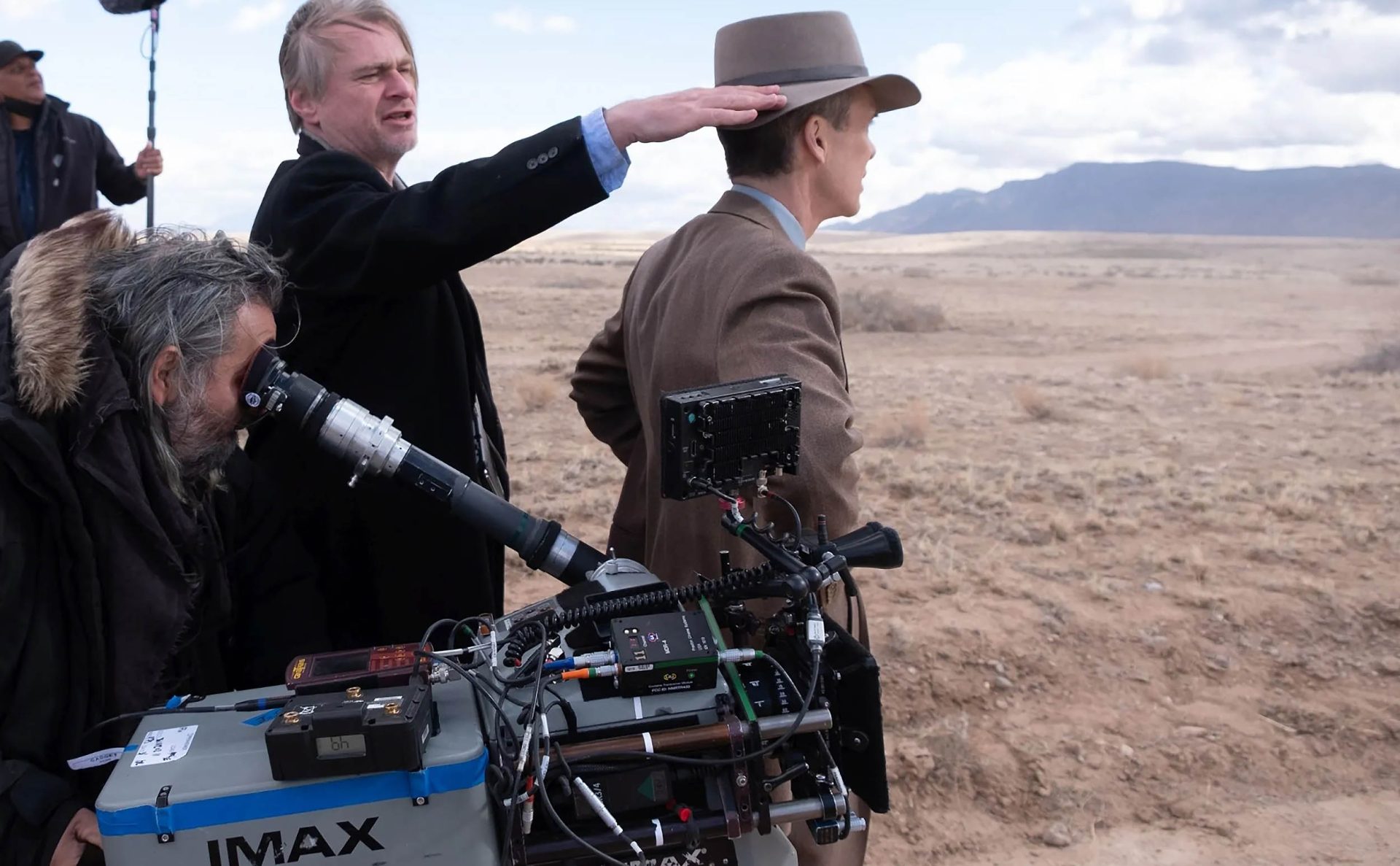
as Oppenheimer, right
The IMAX quality brings the audience closer to characters. This is not to say there’s only talking faces with pristine IMAX quality in Oppenheimer. Nolan wrote the movie in first person taking the audience into the mind and experience of Oppenheimer through his eyes as he sat at the absolute center of the largest shift in history. That part of the movie was shot in IMAX colour. “One of the things that cinema has struggled with historically is the representation of intelligence or genius. It very often fails to engage people” said Nolan in an interview in The Writing Studio.
Oppenheimer marks the fourth collaboration for Christopher Nolan and cinematographer Hoyte van Hoytema, who served as director of photography in Nolan’s other hits – Interstellar, Tenet and Dunkirk. The two worked well challenged to keep most of the movie as it appeared when shot. Nolan added minimum computer effects for taking out things and adding layers of things together. He spent most of his pre-production time creating accurate depictions of atomic bombs to serve the audience while keeping cast and crew safe. He also instructed his f/x effects team there could be no computer-generated imagery.
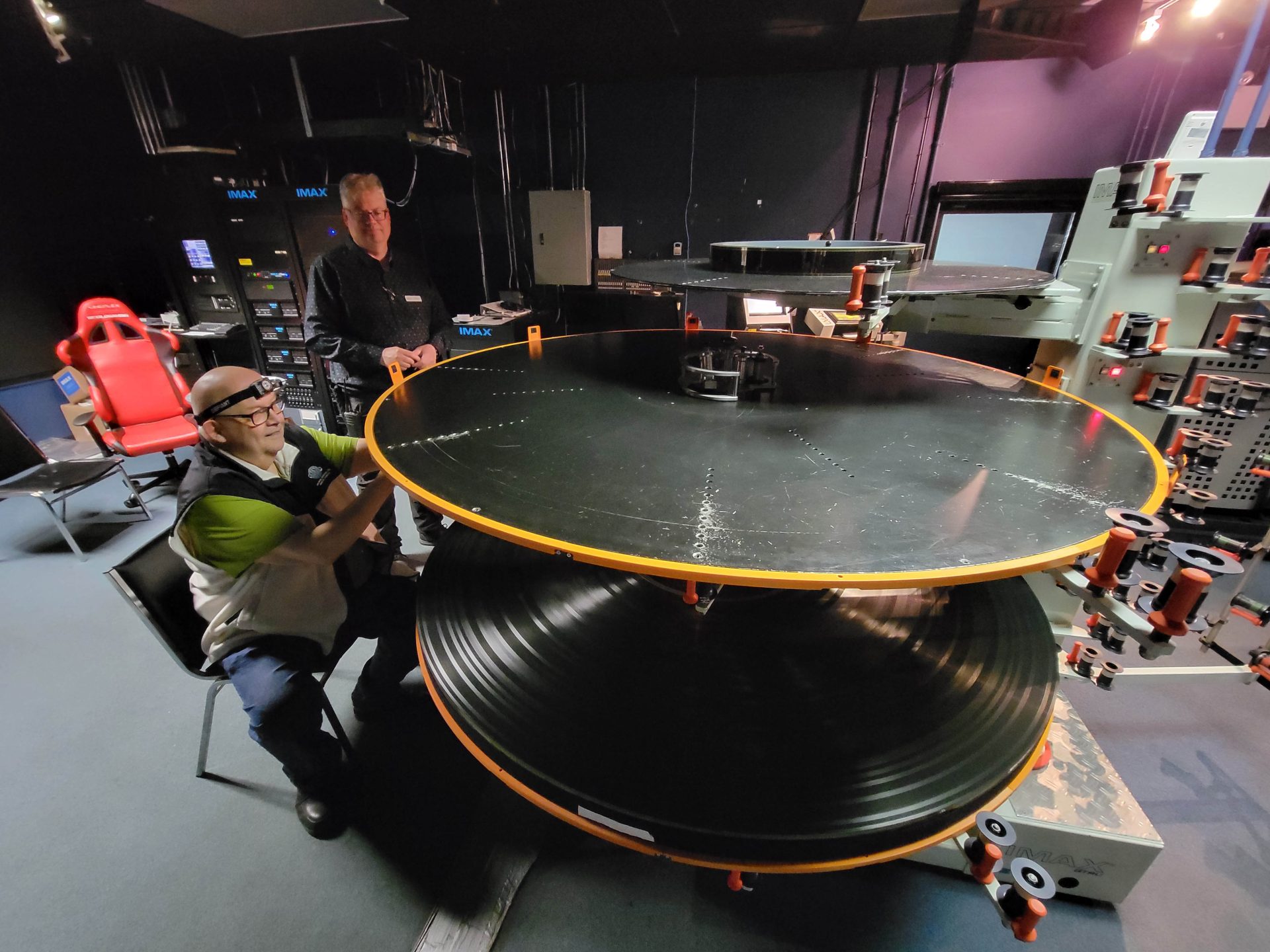
So while the audience is drawn in humanity’s inner struggles during the creation of the first atomic bomb, Earl takes in a book during to the background click and clatter of moving film in three daily shows. “There isn’t much to do here once the movie starts” said Earl who describes his job as 99 percent boredom and one percent panic. “I usually read a whole book , occasionally peaking through the window at the audience and screen.





